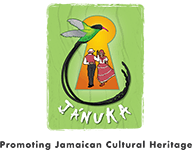 This is Part 2 of a list of 15 dance figures/sets. You can read Part 1, Post 3 and Post 4 for the full list.
This is Part 2 of a list of 15 dance figures/sets. You can read Part 1, Post 3 and Post 4 for the full list.
Part 2
6. Figure of 8 with a diamond in the centre
Women move their bodies and feet to create a numerical ‘8’ pattern with a diamond at the centre. They pass each other courteously but do not stop to talk or socialize. Simultaneously, men create circular patterns around their bases, as if keeping watch, anxiously await their women return.
Historical relevance
Slave women were expected to work equally hard on sugar plantations in sweltering conditions, inappropriately dressed, as their men folks. The constant supervision and fear of harsh punishment ensured they did not waste time socialising during the long working hours.
Some were severely punished and disappeared forever.
Symbolism
In this dance we symbolise slave women’s journey to the market place/mills. Their raised hands imply the balancing basket of produce on their heads. Although no stopping to socialise, their laboured bodily movements and eye contacts are sending coded messages of abhorrence of hard plantation life. The diamond in the centre of the eight is symbolic of cultural richness, hidden creative and nurturing talents that are yet to be discovered.
We demonstrate our female ancestors’ unity, physical strength, silence and endurance.
7. Men Go Visiting
Men leave their female partners and wander off to meet and greet other women along the way. They express enjoyment and polite behaviour as they greet and reel the women.
Historical relevance
Social encounters when permitted, normally on Sundays, allowed enslaved African men to fraternise with women they meet. They were not allowed to develop stable family units as a normal way of life, even if they had children. Their children would be taken away from the mothers and sold into slavery.
Symbolism
In this dance we demonstrate our male ancestor’s covert sexual behaviour, their brave and adventurous courtship spirit as they search for a female partner, to satisfy a basic human need for companionship. The women enjoy the attention and respond gleefully.
8. Couples Go Visiting
Couples meet at centre stage where they briefly exchange greetings with other couples before returning to their bases.
Historical relevance
Some plantations had designated communal places where social encounters were allowed on public holidays. The enslaved made most of these opportunities, and in their dress-up clothes would sometimes travel long distances to celebrate, fraternise, and enjoy themselves and to communicate their plans and dreams.
Symbolism
In this dance we demonstrate our ancestors’ opportunistic behaviour, wisdom, collective awareness, community spirit and determination to enjoy their life despite the hardships they were experiencing.
9. Exchange of Partners
Men hand over their female partners to other men and view the interactions between the men with 2 women suspiciously and jealously. They then try to attract the attention of the women.
Historical relevance
Men and women faced courtship dilemma during slavery days. They were not allowed to have stable sexual partners and some would be secretly promiscuous. Polygamy was also normal in some African cultures, hence possessing 2 or more women would be considered socially acceptable.
The exchange of partners is also symbolic of the colonialists who subjected enslaved men and women, working as house and field slaves, to physical and sexual exploitation for pleasure or selective reproduction, to replenish their slave stock and for profit. However some enslaved women eventually welcomed the sexual attention of their slave masters, for survival. It also provided some the opportunity for advancement in their social status and to receive favourable treatment.
It is also symbolic of the “For Sale at Auction” of surplus slave stock that included men, women and children. This resulted in legitimate family members being sold to other plantations on and off the island, never to be seen again.
Symbolism
In this dance we demonstrate our male ancestors’ enchantment, pride mentality, brave and adventurous courtship spirit, as they fleetingly contemplate which woman to choose, as is customary, or even hoping to have both!
We also demonstrate our female ancestors’ modest yet flirtatious behaviour, desire for attention and male companionship, and their covert submissive behaviour to authority.




